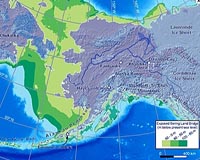| . |  |
. |
Geneva (AFP) Nov 3, 2009 More than 1,000 freshwater fish species are threatened with extinction, reflecting the strain on global water resources, an updated global "Red List" of endangered species showed Tuesday. The list by the International Union for Conservation of Nature (IUCN) is the most respected inventory of biodiversity covering more than 47,000 of the world's species. Scientists looked at 3,120 freshwater fish this year, 510 more than a year ago. They found that 1,147, or a third, are now threatened with extinction. "Creatures living in freshwater have long been neglected," said Jean-Christophe Vie, deputy head of species programme at the IUCN. "This year we have again added a large number of them to the IUCN Red List and are confirming the high levels of threat to many freshwater animals and plants. "This reflects the state of our previous water resources. There is now an urgency to pursue our effort but more importantly, to start using this information to move towards a wise use of water resources." The scientists also added 1,360 species of dragonflies and damselflies to the Red List, and found that out of 1,989 in all, 261 were at risk of disappearing. Dragonflies provided a good gauge of the state of freshwater ecosystems as "many are very sensitive" to changes, said Vie. "We found that they are highly threatened wherever we looked," he said, noting that water resources were under strain due to pollution and intensive usage. Meanwhile, the tiny Kihansi Spray Toad, which once numbered at least 17,000 at the Kihansi Falls in Tanzania, joined the list of creatures which are now extinct in the wild. "Its decline is due to the construction of a dam upstream of the Kihansi Falls that removed 90 percent of the original water flow to the gorge," said the IUCN in a statement. Overall, this year's survey found that over a third, or 17,291 species out of 47,677 assessed are now threatened with extinction. Last year, the Red List examined 44,838 species and found that a smilar proportion (16,298 species) were close to becoming extinct. "What we haven't got this year is good news," said Vie. The overall situation may be worse than reflected according to the IUCN, since data was lacking for 14 percent of the species surveyed. In addition, the survey only covers a fraction of the world's species. "These results are just the tip of the iceberg. We have only managed to assess 47,663 species so far; there are many more millions out there which could be under serious threat," said Craig Hilton-Taylor, manager of the IUCN Red List unit. The environmental group WWF also urged action, saying the latest Red List update "should cause alarm over the continuing unprecedented loss of species and the failure so far of mechanisms to arrest biodiversity loss." "As crucial climate talks in Copenhagen draw near and with the International Year of Biodiversity around the corner, this is a wake-up call for world leaders," said Amanda Nickson, Director of the WWF International Species Programme. Share This Article With Planet Earth
Related Links Darwin Today At TerraDaily.com
 Life's Ancient Island In The Ice
Life's Ancient Island In The IceMoffett Field CA (SPX) Nov 02, 2009 The Klondike region of the Canadian Arctic isn't often thought of as an oasis for life. Today, the area is best known for its vast frozen wilderness, its goldfields, and as the namesake of a popular chocolate-coated ice cream treat. However, new research shows that the Klondike goldfields of Canada's Yukon Territory hold key records of a past environment that was much different than the ... read more |
|
| The content herein, unless otherwise known to be public domain, are Copyright 1995-2009 - SpaceDaily. AFP and UPI Wire Stories are copyright Agence France-Presse and United Press International. ESA Portal Reports are copyright European Space Agency. All NASA sourced material is public domain. Additional copyrights may apply in whole or part to other bona fide parties. Advertising does not imply endorsement,agreement or approval of any opinions, statements or information provided by SpaceDaily on any Web page published or hosted by SpaceDaily. Privacy Statement |